Artificial Intelligence (AI) is no longer a futuristic concept but a pivotal part of our daily lives. AI’s applications are vast and transformative, from virtual assistants that help us manage our schedules to advanced algorithms that predict market trends and diagnose diseases. However, this technological advancement…
OpenAI Unveils SearchGPT: A New AI-Powered Search Engine
OpenAI has announced the launch of SearchGPT, a new AI-powered search engine. This development marks OpenAI’s entry into the competitive search market, potentially challenging established players like Google and emerging AI search tools such as Perplexity. SearchGPT represents a significant expansion of OpenAI’s product lineup, building…
The Legend Of Zelda: Majora’s Mask Part 21 | Super Replay
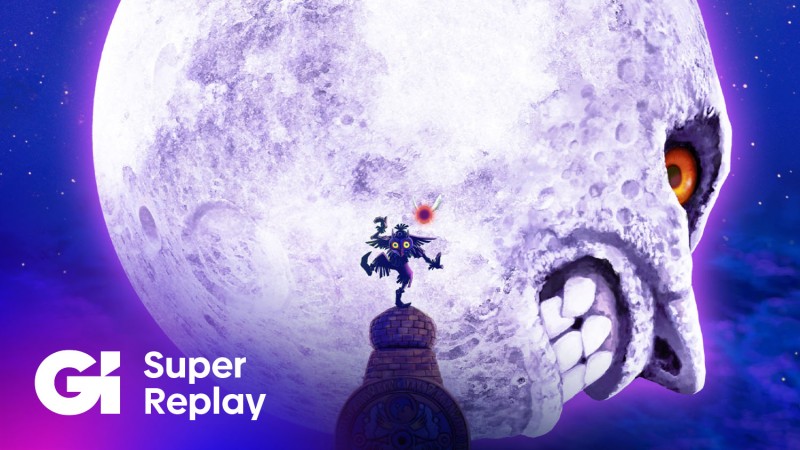
After The Legend of Zelda: Ocarina of Time reinvented the series in 3D and became its new gold standard, Nintendo followed up with a surreal sequel in Majora’s Mask. Set two months after the events of Ocarina, Link finds himself transported to an alternate version of Hyrule called Termina and must prevent a very angry moon from crashing into the Earth over the course of three constantly repeating days. Majora’s Mask’s unique structure and bizarre tone have earned it legions of passionate defenders and detractors, and one long-time Zelda fan is going to experience it for the first time to see where he lands on that spectrum.
Join Marcus Stewart and Kyle Hilliard today and each Friday on Twitch at 2:00 p.m. CT as they gradually work their way through the entire game until Termina is saved. Archived episodes will be uploaded each Saturday on our second YouTube channel Game Informer Shows, which you can watch both above and by clicking the links below.
Part 1 – Plenty of Time
Part 2 – The Bear
Part 3 – Deku Ball Z
Part 4 – Pig Out
Part 5 – The Was a Bad Choice!
Part 6 – Ray Darmani
Part 7 – Curl and Pound
Part 8 – Almost a Flamethrower
Part 9 – Take Me Higher
Part 10 – Time Juice
Part 11 – The One About Joey
Part 12 – Ugly Country
Part 13 – The Sword is the Chicken Hat
Part 14 – Harvard for Hyrule
Part 15 – Keeping it Pure
Part 16 – Fishy Business
Part 17 – Eight-Legged Freaks
Part 18 – The Side Quest Episode
Part 19 – Go Planet
Part 20 – Keeping Up with the Gormans
[embedded content]
If you enjoy our livestreams but haven’t subscribed to our Twitch channel, know that doing so not only gives you notifications and access to special emotes. You’ll also be granted entry to the official Game Informer Discord channel, where our welcoming community members, moderators, and staff gather to talk games, entertainment, food, and organize hangouts! Be sure to also follow our second YouTube channel, Game Informer Shows, to watch other Replay episodes as well as Twitch archives of GI Live and more.
Teenage Mutant Ninja Turtles: Splintered Fate Review – Radical Repetition – Game Informer
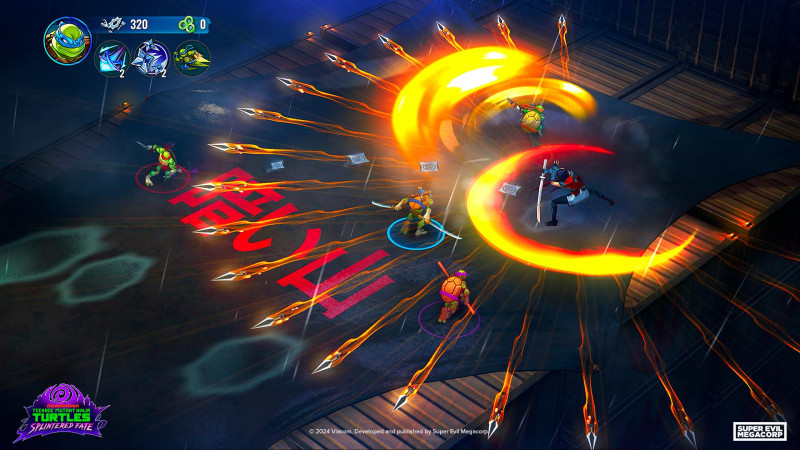
The Teenage Mutant Ninja Turtles starred in several iconic video games throughout the franchise’s 40-year history, but none are more beloved than the beat ’em up entries like the 1989 arcade game and Turtles in Time. However, that genre often lacks the depth modern gamers desire. Teenage Mutant Ninja Turtles: Splintered Fate takes various cues from recent popular games – specifically Supergiant’s smash hit, Hades – en route to modernizing the action-packed hack-and-slash gameplay the Turtles have been known for since their earliest days in the medium. The result is a fun roguelike full of meaningful progression and engaging action that doesn’t soar quite as high as the games that inspired it.
After a mysterious captor abducts Master Splinter, you control one of the four iconic turtle brothers on a quest to get him back. Each playable character possesses different basic combos, special attacks, and tools, allowing you to pick a foundation to build upon as you progress through each run. Leonardo’s average range is complemented nicely by his ability to toss shurikens and gain an extra charge on his special, while Donatello’s long range is offset by being a tad stiffer, but his tool also recharges 80 percent faster (after all, he does do machines). I loved Michelangelo’s sweeping nunchucks and the chance to land multiple hits on a single strike, but Raphael’s grappling hook that pulls enemies closer and higher critical damage quickly made him my main. You’ll have plenty of time to experiment to find your right fit, as each time you die, you start back in the Turtles’ lair to start the run anew.
Each run plays out in similar fashion: You start by choosing a skill like additional dash charges, a better chance to dodge, or an enhancement to your selected turtle’s special ability. You then fight through room after room of enemies ranging from rats and Mousers to Foot Clan ninjas and fellow mutants. Each faction brings different attacks, requiring slightly different approaches, but the action typically consists of dashing around the arena to avoid incoming attacks while working towards clearing the room. Combat feels great, with each attack in your arsenal feeling like an impactful part of a successful and fun strategy. This is particularly true when Elite enemies drop in, like a giant StockGen robot or special elemental Foot assassins.
Rooms typically don’t take long to clear. When the repetition begins to set in from successive runs, I often find enjoyment in trying out new combos or simply getting through the earliest rooms as quickly as possible. Testing out new builds or setting your own challenges are fun, but it doesn’t change that you’re still completing the same rooms and facing the same bosses on repeat. Splintered Fate attempts to remedy this by introducing new variants of the handful of bosses in the game, but regardless of whether the first boss suddenly summons more minions or the second boss now uses flame attacks, I still dreaded facing them for the 20th time. Even the gauntlet challenges, unlocked after completing your first run, do little to diversify the experience. Splintered Fate’s co-op, which can be played locally or online, shakes things up by letting you combine the Turtles’ tools and abilities, but the structure remains the same.
Obviously, a crucial element of the roguelike formula is the upward trajectory of both your skills as a player and your character’s strengths through permanent upgrades. TMNT: Splintered Fate handles this admirably; I always felt I was improving run over run, aided by the permanent upgrades unlocked through various currencies. This satisfying loop is, unfortunately, hindered by the sheer number of currencies you need to keep track of.
[embedded content]
In addition to Scrap, the in-run currency used for temporary upgrades, you receive two distinct permanent currencies to upgrade different parts of the experience; one lets you upgrade the economy, including the amount of Scrap dropped by enemies and more powerful upgrades offered after beating rooms, while the other permanently improves your character’s attributes like attack damage and health. However, some upgrades also require special items dropped by bosses, of which there are several, in conjunction with the permanent currencies. If it sounds confusing, that’s because it is. I don’t mind having more stringent requirements to unlock higher-level upgrades, but when a game requires me to constantly reference a help screen to know what each of its more-than-nine currencies does and how to obtain them, it should serve as a warning to the developers that the system has gone too far.
Despite the overt repetition, both by design and through over-design, Teenage Mutant Ninja Turtles: Splintered Fate effectively channels the spirit of the most well-liked games that have come before it in the franchise. Though I sometimes succumbed to frustration after falling short during a promising run, the experience only galvanized me to excitedly take what I learned from my failures into the next run.
ChatGPT-4 vs. Llama 3: A Head-to-Head Comparison
As the adoption of artificial intelligence (AI) accelerates, large language models (LLMs) serve a significant need across different domains. LLMs excel in advanced natural language processing (NLP) tasks, automated content generation, intelligent search, information retrieval, language translation, and personalized customer interactions. The two latest examples are…
LaCie Rugged SSD and SSD Pro Storage Solutions – Videoguys

Built to roam, built to play. Our durable lineup of Rugged NVMe SSDs are ready to explore. Built forward-compatible up to USB 40Gbps and Thunderbolt 4, these rugged drives are engineered to handle a broad range of creative production demands. Vloggers, videographers, freelancers, indie filmmakers, even weekend warriors—we’ve got you covered
|
 |
Level Up Your 4K Video Project
Give your workflow a substantial boost with Rugged SSD. With speeds 2× faster than traditional SATA SSDs, this encrypted USB drive uses Seagate FireCuda NVMe SSD performance to maximize USB 3.1 Gen 2 throughput while delivering IP67 waterproof strengt
|
 |
Harness 6K Video and Beyond
Rugged SSD Pro fuses the blazing-fast Seagate FireCuda NVMe SSD with a Thunderbolt 3 interface, unleashing speeds 5× faster than traditional SATA SSDs so that you can play back and render the most demanding high bit rate RAW content—like 6K, 8K, and super slo-mo source files.
|
Evolving cyber security in the financial services sector – CyberTalk

EXECUTIVE SUMMARY:
The financial sector is a leading target for cyber criminals and cyber criminal attacks. Markedly improving the sector’s cyber security and resilience capabilities are a must. While the sector does have a comparatively high level of cyber security maturity, security gaps invariably persist and threaten to subvert systems.
As Check Point CISO Pete Nicoletti has noted, attackers only need to get it right once in order to catalyze strongly negative, systemic consequences that could send shockwaves throughout companies and lives across the globe.
In this article, discover financial sector trends, challenges and recommendations that can transform how you see and respond to the current cyber threat landscape.
Industry trends
- According to a newly emergent report, 65% of financial services sector organizations have endured cyber attacks.
- The median ransom demand is $2 million. Mean recovery costs have soared to roughly $2.6 million – up from $2.2 million in 2023.
- The size of extreme losses has quadrupled since 2017, to $2.5 billion.
The potential for losses is substantial, especially when multiplied in order to account for downstream effects.
Industry challenges
The majority of financial leaders lack confidence in their organization’s cyber security capabilities, according to the latest research.
Eighty-percent of financial service firm leaders say that they’re unable to lead future planning efforts effectively due to concerns regarding their organization’s abilities to thwart a cyber attack.
There is a significant gap between where financial sector institutions want to be with cyber security and where the industry is right now.
Preparing for disruption
Beyond cyber security, financial sector groups need to concern themselves with business continuity in the event of disruption — which is perhaps more likely than not.
“While cyber incidents will occur, the financial sector needs the capacity to deliver critical business services during these disruptions,” writes the International Monetary Fund.
A major disruption – the financial sector equivalent of the Colonial Pipeline attack – could disable infrastructure, erode confidence in the financial system, or lead to bank runs and market selloffs.
To put the idea into sharper relief, in December of 2023, the Central Bank of Lesotho experienced outages after a cyber attack. While the public did not suffer financial losses, the national payment system could not honor inter-bank transactions for some time.
Industry recommendations
Organizations need innovative approaches to cyber security — approaches that prevent the latest and most sophisticated threats. Approaches that fend off disaster from a distance.
| In 2023, nearly 30 different malware families targeted 1,800 banking applications across 61 different nations. |
At Check Point, our AI-powered, cloud-delivered cyber security architecture addresses everything — networks, endpoints, cloud environments and mobile devices via a unified approach.
We’ve helped thousands of organizations, like yours, mitigate risks and expand business resilience. Learn more here.
For additional financial services insights, please see CyberTalk.org’s past coverage. Lastly, to receive cyber security thought leadership articles, groundbreaking research and emerging threat analyses each week, subscribe to the CyberTalk.org newsletter.
The Friday Roundup – On Screen Tips and A.I. Backgrounds
10 Talent Tips In 10 Minutes – Make Great Videos This is a video I posted a while back now but over the last week I have been doing some shooting and it came to mind. I have been working with some people that have little…
Everything We Know About Dragon Age: The Veilguard’s Bellara Lutare
We’ve reached the end of Game Informer’s Dragon Age: The Veilguard cover story coverage as we prepare to launch our next exciting issue. But I still have this one last feature to publish, and it’s about Bellara Lutare, the Dalish elf and member of the new Veil Jumpers faction in the game. During my visit to BioWare’s Edmonton, Canada, office earlier this year, I checked out the game’s expansive character creator, its in medias res prologue, and the first mission after said prologue.
Though BioWare released a big look at Veilguard’s prologue via a 20-minute gameplay trailer last month, they haven’t released much about that subsequent mission, where you meet and recruit your first companion, Bellara. I learned a lot about this character, and knowing I was one of the first outside of the studio to see the mission where you meet her, I spent a chunk of my interviews with the team’s leads talking about Bellara. So, for my final feature on Dragon Age: The Veilguard, here’s everything I learned about this quirky elven mage.
Everything We Learned About Bellara Lutara In Dragon Age: The Veilguard
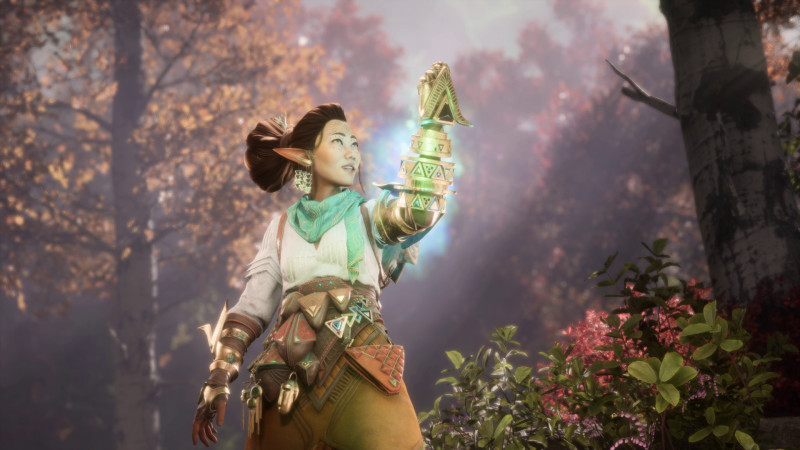
In talking with BioWare’s various leads, like game director Corinne Bushce, creative director John Epler (who is personally responsible for writing Bellara and leading her development), and BioWare general manager Gary McKay, it’s clear the team has a deep love for this character. She’s energetic, effervescent, and academic, and as a companion for combat, she’s a character I’m pretty excited to use in my party.
“I love Bellara, I think she’s fantastic,” McKay tells me. “I see people that I know in her and so that’s how she really resonates with me. I love the whole tinkerer aspect to her. It was a collective to bring that character to life. It was everything from the writers, to the editors, the animators, to character modelers, to the texturing, to how we light her. I’m really proud of that character.”
Bellara In Combat
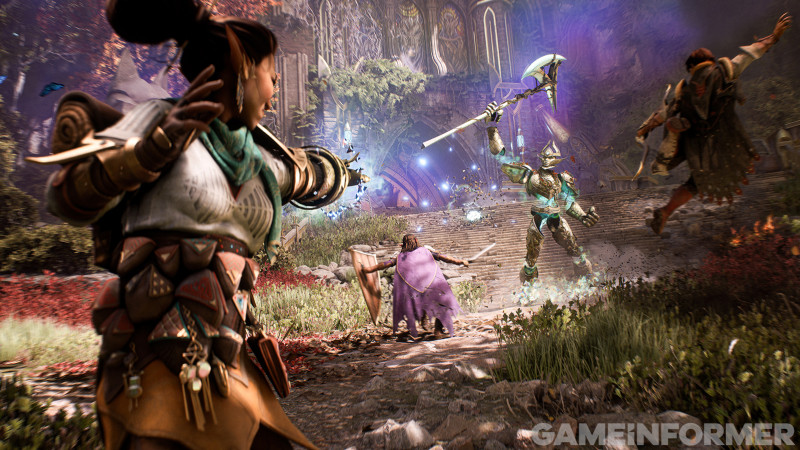
When I ask Busche about Bellara, she gives me some insight into what I can expect of the mage on the battlefield. And Bellara sounds like an excellent choice for both support and elemental combos.
“Oh my goodness, she is amazing,” Busche says. “So, first of all, she is a mage. She is an explorer of ancient Elven ruins. She is an elf herself and a member of the Veil Jumpers faction. They investigate the ancient ruins of Arlathan. Everything about her character as a mage leans into that, but she also challenges the kind of archetypal idea of a mage.”
She does that by attacking with a bow at range using electrically charged arrows. But she’s also casting spells that slow down time or heal allies and Rook. She does that by channeling magical energy into her gauntlet. Busche says she starts as a support character in combat, thanks to her healing spells, but notes players don’t have to build her out that way. She also leans into electrical damage, and “damage type really matters a lot when we get into the strategy and tactics,” Busche says.
“You can spec her out in a way where she’s unleashing this devastating vortex that pulls in all enemies into an electrical storm. Maybe then we unleash our own [area of effect attack] with all the enemies clumped together,” Busche adds. “She can debuff all the enemies with the shocked affliction, where they’re taking passive damage. I mentioned she can slow time, she can heal. She is one of the characters that you can build out [to have her] healing spells heal you autonomously, so if you’re the kind of player that likes to be on the frontlines […] Bellara might just be the perfect companion for you.”
Bellara’s Place In The World
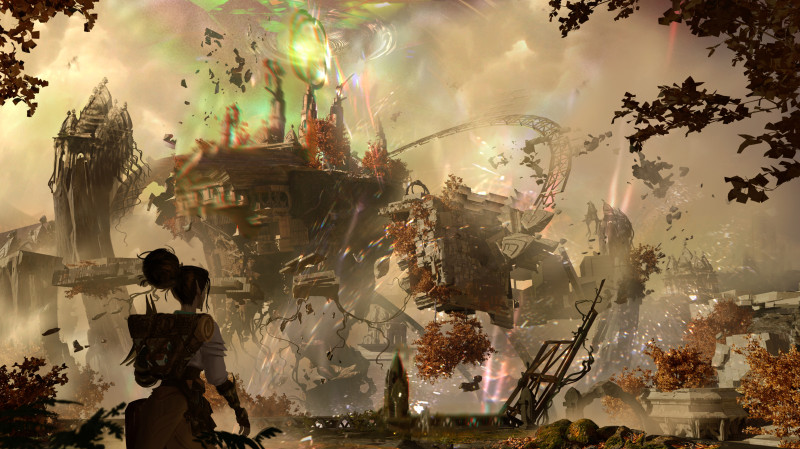
Epler, who writes Bellara, tells me about her place in Thedas as an elf and the connection elves have to the magic of the world. He says if you’ve paid attention to the franchise, you likely already know that elves are historically an oppressed people in the games. Now, with two of their gods on the loose in Veilguard, magic has poured back into the world in a big way.
“She represents the Veil Jumpers,” Epler explains. “Now, the Veil Jumpers are a faction that’s appeared in the comics before, but otherwise, this is the first time it’s appeared in the games, and they are the ones journeying through Arlathan, where the ancient elven empire used to exist and left a lot of artifacts when it disappeared. When the elves fell from immortality thousands of years ago, they still left a lot of their artifacts and a lot of their, for lack of a better term, magical technology behind, and Bellara represents this yearning to find the truth of who the elves were because not only did they lose their magic and their immortality, they lost a lot of their history.
“A lot of what they know of their past is based on myth, it’s based on rumor. Bellara is a knowledge seeker. She wants to find out what’s true, what’s not; she wants to find the pieces of who the elves used to be and really understand what their story was, where they came from, as well as figure out where they’re going next, and find a future for the elves. And within the context of The Veilguard, she joins the team, first of all, to help stop the gods because Bellara feels at least partially responsible since they are elven gods, but also to maybe find a little bit more of who they used to be. Because again, you’re dealing with these elves that were around millennia ago that have now reemerged into the world, and who better to teach her who the elves used to be than them.”
A Quick Detour: Magic
For one of my last questions to Epler, I was curious about the contrast between Bellara, an elven mage who is optimistic and bubbly, and Solas, a determined and tragic character. He indicated there might be more to Bellara than meets the eye.
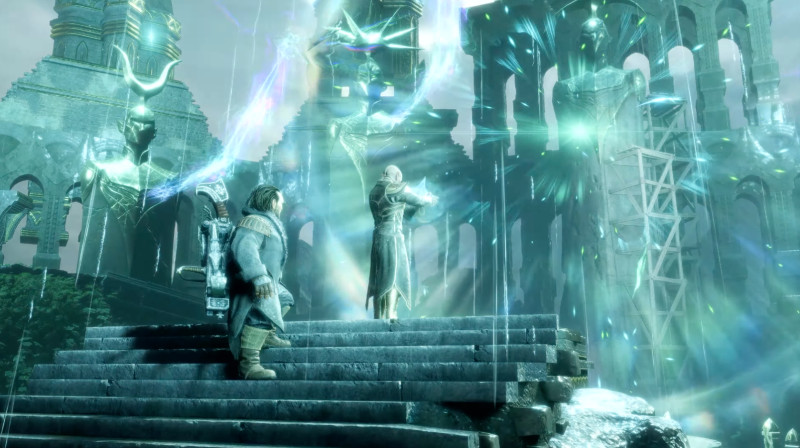
“Solas sees himself as the tragic hero,” Epler says. “He’s not capable of really being happy, he can’t let himself be happy, partially because he carries the guilt of what he did bringing the Veil, doing what he did to the world. Whereas Bellara is somebody who has seen tragedy, and as you get into her character arc and get into her backstory, you realize this is a character who has seen a lot of tragedy. But that tragedy, instead of wallowing in it, she’s forced herself to push past it. She looks at her regrets, and she tells herself, ‘I don’t want to feel regret.’
“Whereas again, Solas tends to wallow in his to a large degree. And it allows us to create a very big differentiation. Part of it is also because Solas is an ancient elf, whereas Bellara is a Dalish elf, but she just sees a problem and wants to solve it. She feels a tremendous amount of responsibility to her people […] to the Dalish, and to the Veil Jumpers, and that drives her forward. That said, she does have her moments where she has doubt, she has moments where she has a more grim outlook, and there are moments where you realize that some of her sunny, optimistic outlook is kind of a mask that she puts on to hide the fact that she’s hurting, she’s in pain. But in general, she doesn’t see any benefit to wallowing in those regrets.”
We learned today that Bellara will be voiced by Jee Young Han, known for her roles in Perry Mason, Unprisoned, and as Sentinel Dax in a previous Bioware game, Anthem. To see the rest of the cast, along with Rook’s four voice options, click here.
[Editor’s Note: This article has been updated to reflect that Bellara’s last name is Lutare, not Lutara as it previously incorrectly stated]
For more about the game, including exclusive details, interviews, video features, and more, click the Dragon Age: The Veilguard hub button below.

